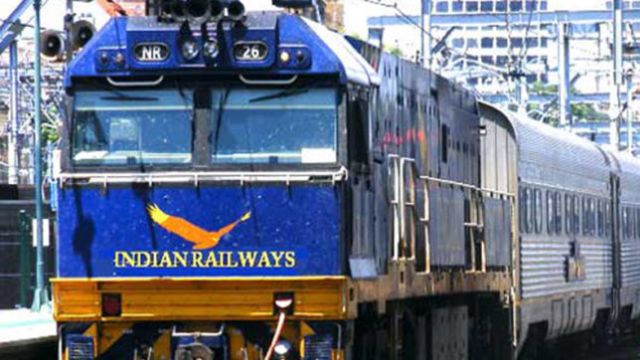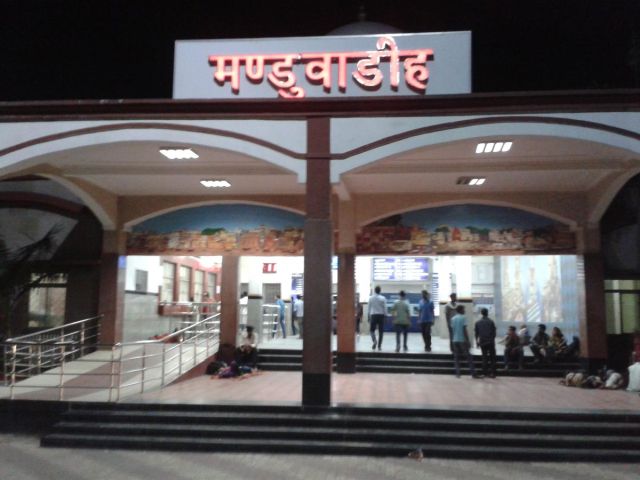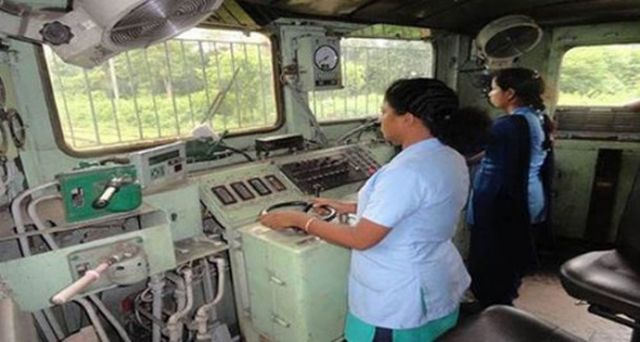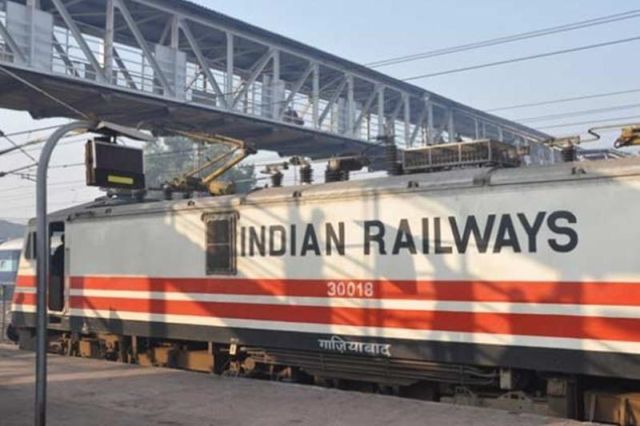
by admin | May 25, 2021 | Business, Corporate, Corporate Governance, Large Enterprise
 By Arun Kumar Das,
By Arun Kumar Das,
New Delhi : Five leading global loco makers have joined the bidding in Indian Railways Rs 5,000 crore tender for the manufacture of 200 high horse power electric locomotives to be pressed into service for heavy haulage in the Western Dedicated Freight Corridor.
Railways require 200 electric locos with 9,000 horse power (HP) each to haul double-stack containers in the upcoming 1,534 km long Western Dedicated Freight Corridor (DFC) from Dadri to Mumbai, passing through Delhi, Haryana, Rajasthan, Gujarat and Maharashtra.
According to the tender conditions, the selected manufacturer will make 190 locos at the Indian Railways’ Chittaranjan Locomotive Works facility in Asansol, with transfer of technology provision and import of only 10 engines. The company will also set up a maintenance depot at Rewari.
Showing interest in the project, five international players — Siemens, Bombardier, Alstom, BHEL-EMD and Toshiba-CRRC — have submitted applications on March 15, the last date for submission of pre-qualification bids.
“These companies will submit their price bid by the end of April and the awarding the contract is expected by December this year,” said a senior Railway Ministry official.
The Railways had floated the global tender for high power locomotives after revising the loan conditions with the Japan International Cooperation Agency (JICA) as the Western DFC is fully funded by Japan.
Procurement of locos for Western DFC had to be from Japanese companies, as per the earlier agreement and, accordingly, the Railways had floated the tender two years back inviting Japanese companies for the project.
However, the bidding process got stuck on the pricing front as the Japanese companies quoted Rs 50 crore per locomotive which was considered too high and the Railways sought reduction by almost half.
While the Japanese consortium did not agree to reduce the price as desired by Railways, a fresh global tender was floated after renegotiating and suitably revising the loan conditions.
With five global players in the fray, the Railways is expecting to get a competitive price this time.
The 3,373 km long DFC, a flagship project of the Railways, aims to augment rail transport capacity to meet the growing requirement of movement of goods by segregating freight from passenger traffic.
The Western DFC (1,534 km) will be from Jawaharlal Nehru Port (JNPT) in Mumbai to Tughlakabad and Dadri near Delhi, and would cater largely to the container transport requirements between the existing and emerging ports in Maharashtra and Gujarat and the northern hinterland.
The Eastern DFC (1,839 km) will be from Ludhiana in Punjab to Dankuni near Kolkata — to be extended in future to serve the new deep sea port proposed in the Kolkata area, and will largely serve coal and steel traffic.
(Arun Kumar Das is a senior Delhi-based freelance journalist. He can be contacted at akdas2005@gmail.com)
—IANS

by admin | May 25, 2021 | Corporate, Corporate Governance, News, Politics
 By Brajendra Nath Singh,
By Brajendra Nath Singh,
Varanasi : The holy city of Varanasi is soon likely to get a railway station named “Banaras”.
The Railway Ministry is considering renaming the Manduadih railway station as Banaras railway station.
Manduadih is among one of the four railway stations in the city besides Varanasi Junction, popularly known as Varanasi Cantt Railway Station, Varanasi City and Kashi.
Minister of State for Railway Manoj Sinha told a group of journalists: “There is a proposal to change the name of Manduadih railway station. The ministry is considering it. We have already stations in the names Varanasi and Kashi. Only the name of Banaras is left out.”
Manduadih is a place in Varanasi situated about four kilometers from Varanasi Cant Station. The Diesel Locomotive Works (DLW), where engine parts of the train are manufactured, is situated near Manduadih.
Varanasi, also called Banaras and Kashi, was chosen in 2014 by Narendra Modi to contest the Lok Sabha polls from city of Uttar Pradesh.
The name Varanasi is said to be derived from combination of ‘Varuna’ and ‘Asi’ — the names of rivers. Kashi is the ancient name of Varanasi.
Dushyant Rai, the Rajbhasha consultant in the Railway Board, welcomed the move.
“The name Banaras means ‘bana rahe ras’. This word reflects the real culture of the city. The people in Banaras enjoy everything. Be it ‘geet-sangeet, puja-path and also misthanna-paan’,” said Rai, who hails from the city.
A top railway official of Varanasi division told IANS: “The name Manduadih doesn’t sound good and doesn’t connect with the legacy of Banaras which the name Banaras does.”
Mughalsarai Junction is another important station located near Varanasi whose name was changed to Deen Dayal Upadhyay junction in October 2017 after the BJP came to power in Uttar Pradesh.
A plan to change the name of a railway station goes through a long process. It must be cleared by the Home Ministry after a state sends a proposal of renaming a station to the Ministry of Railways.
—IANS

by admin | May 25, 2021 | Corporate, Corporate Governance, Employment, Government Jobs
 By Arun Kumar Das,
By Arun Kumar Das,
New Delhi : Train drivers will undergo advanced training on digital crew simulation systems with 3D technology to improve their alertness and enhance safety in train operations.
With the modernisation of training facilities and skill development of crew becoming a major focus area, Indian Railways has decided to equip all divisions with advanced simulators at an estimated cost of Rs 350 crore (close to $54 million) for training loco pilots.
A provision for advanced simulators has been made under Rashtriya Rail Sanraksha Kosh for providing simulator-based training of crew across Indian Railways in the budget for 2018-19.
Locomotive pilots and assistant locomotive pilots are key frontline staff of the Railways and play a crucial role in train operations and safety.
Globally, simulator-based training is emerging as a critical component of crew training as this helps improve driving proficiency by providing training in a real-life environment and exposing trainees to unusual occurrences.
Over 12,000 electric and diesel locomotives daily run on the 66,000 km network across the country. There are about 86,000 train drivers in the Railways.
“The aim is to enhance the learning experience of the crew and improve their productivity and driving skills with regard to aspects like train dynamics and handling, dealing with unusual and hazardous events, route learning, economical fuel efficient driving and safe operations,” a senior Railway Ministry official said.
Currently there are seven electric and nine diesel loco simulators in operation in different divisions while 17 more electric and diesel cab simulators are in the process of induction.
“It has been decided to have advanced simulators in every division so that drivers do not have to travel to other divisions for training,” the official said, adding it will save time and improve productivity.
All divisions will now have the facility for simulation-based training for locomotive crew through a mix of full-cab, motion-based simulators, networked desktop simulators and computer graphic imagery of important rail sections.
“We are planning to modernise the crew training infrastructure across the network by extensively using computer modeling, simulation, digital and 3D technologies and interactive knowledge based training and assessment tools,” official said.
The Railways had carried out a study of simulator-based training being imparted by operators in the US, France and Spain and it emerged that simulators are extensively used to train crew at various stages like initial induction, promotion and periodic refresher courses.
A comprehensive range of simulation-based training tools are being extensively used by railways worldwide. These tools include full-replica cab simulators with motion (for specific locomotive types), generic driver desk cab simulators (some controls are real while some are on touch screen and can be changed depending on locomotive type) and generic desktop simulators or soft simulators/compact simulators.
Emphasis is also on introducing e-learning cloud-based platforms and self-learning simulation-based training on android platforms, the official said.
Increased hours spent on simulator-based training improves the skill of the crew in train management, handling and brake management — and dealing with unusual and unsafe events. This helps improve safety in train operations. Further, it also leads to other benefits like reduction in energy bills through efficient driving and also increases the productivity of the crew.
The study further analysed the requirement of simulation-based training keeping in view the global best practices and norms and also the crew training requirements in the coming years keeping in view massive capacity augmentation and the electrification drive.
(Arun Kumar Das is a senior Delhi-based freelance journalist. He can be contacted at akdas2005@gmail.com)
—IANS

by admin | May 25, 2021 | Corporate, Corporate Governance
 By Arun Kumar Das,
By Arun Kumar Das,
New Delhi : Aiming to save Rs 10,000 crore a year by increasing competition and reducing expenditure on procurement, Indian Railways will implement an electronic reverse auction process for high-value items from April 1, a first-of-its-kind initiative for the national transporter.
The reverse auction will apply to purchases such as wagons, locomotives and coach parts, signalling and track equipment, and cement, among others. It will also include works, services and all production units — allowing vendors to submit multiple bids on a time scale and compete online by offering the lowest acceptable bids.
The Railways annually procure Rs 50,000 worth of goods that it needs for production and maintenance of rolling stock, operation of passenger and goods services, and other safety-related works.
In addition, Rs 10,000 crore worth of track supply materials are procured, while projects and works worth Rs 60,000 crore are taken up for the expansion or upgradation of rail infrastructure.
“Initially, all supply tenders of over Rs 10 crore shall be covered through the electronic reverse auction. Similarly, all services and works above Rs 50 crore shall also be covered,” said a senior Railway Ministry official involved with the formulation of the reverse auction policy.
“The process will be operational in the new fiscal year (2018-19) beginning April 1 and is expected to cover more than 70 per cent of procurement cost and works,” he added.
Currently several ministries, including the Ministry of Power, and public sector undertakings are using the reverse auction process to procure supplies at competitive prices.
The software to run the reverse auction process is being developed by the Centre for Railway information systems (CRIS), the Indian Railways’ software arm, and is expected to be ready by month-end.
Electronic reverse auction is expected to offer industry greater ease of doing business as it will eliminate human intervention and provide paperless transactions. The e-procurement system will also offer more competitive bids to the Railways, as also reduce corruption.
“We aim to reduce the procurement expenditure substantially through the reverse bidding method. Even a 10 per cent saving in cost due to improved competition will result in an overall annual saving of up to Rs 10,000 crore in the procurement of goods, services and works,” the official said.
Reverse auction software will be easy to operate by all without charging any fee — and with this, decision-making in the high-value purchase process will become digital and transparent, he added.
(Arun Kumar Das is a senior Delhi-based freelance journalist. He can be contacted at akdas2005@gmail.com)
—IANS

by admin | May 25, 2021 | Corporate, Corporate Governance
 New Delhi : In a bid to improve speed and line capacity, the Indian Railways is planning to implement Automatic Train Protection (ATP) system namely European Train Controlling System (ETCS) Level-II signalling on its entire broad gauge network of about 60,000 km, the Lok Sabha was informed on Wednesday.
New Delhi : In a bid to improve speed and line capacity, the Indian Railways is planning to implement Automatic Train Protection (ATP) system namely European Train Controlling System (ETCS) Level-II signalling on its entire broad gauge network of about 60,000 km, the Lok Sabha was informed on Wednesday.
“Railways is planning to implement an advanced version of ETCS Level-II on its entire broad gauge network of 60,000 route km, which will enable continuous updating of movement authority in loco cab through wireless network,” the Lok Sabha was told in a written reply to a question.
“The continuous updating of movement authority will ensure improved speed and line capacity as compared to ETCS Level-I,” the government said.
The government also said that the railways have implemented ATP system conforming to ETCS Level-I on 342 route km in which movement authority (distance to travel) displayed in the loco cab is updated, whenever loco passes over a balise fitted on the track.
According to the railway officials, the system enables loco pilot to know the condition of signals ahead even when the visibility of signals is poor due to fog or any other reasons.
The government also said that a Global Positioning System (GPS) based ‘Fog Pass device’ has been developed which displays the name and distance of approaching signals and other critical landmarks like un-manned level crossings etc. in advance during poor visibility conditions.
“About 6,940 fog safe devices have been commissioned in six zonal railways — East Central, Northern, North Central, North Eastern, Northeast Frontier and North Western Railways — where the trains pass through fog-affected region,” the government added.
—IANS




